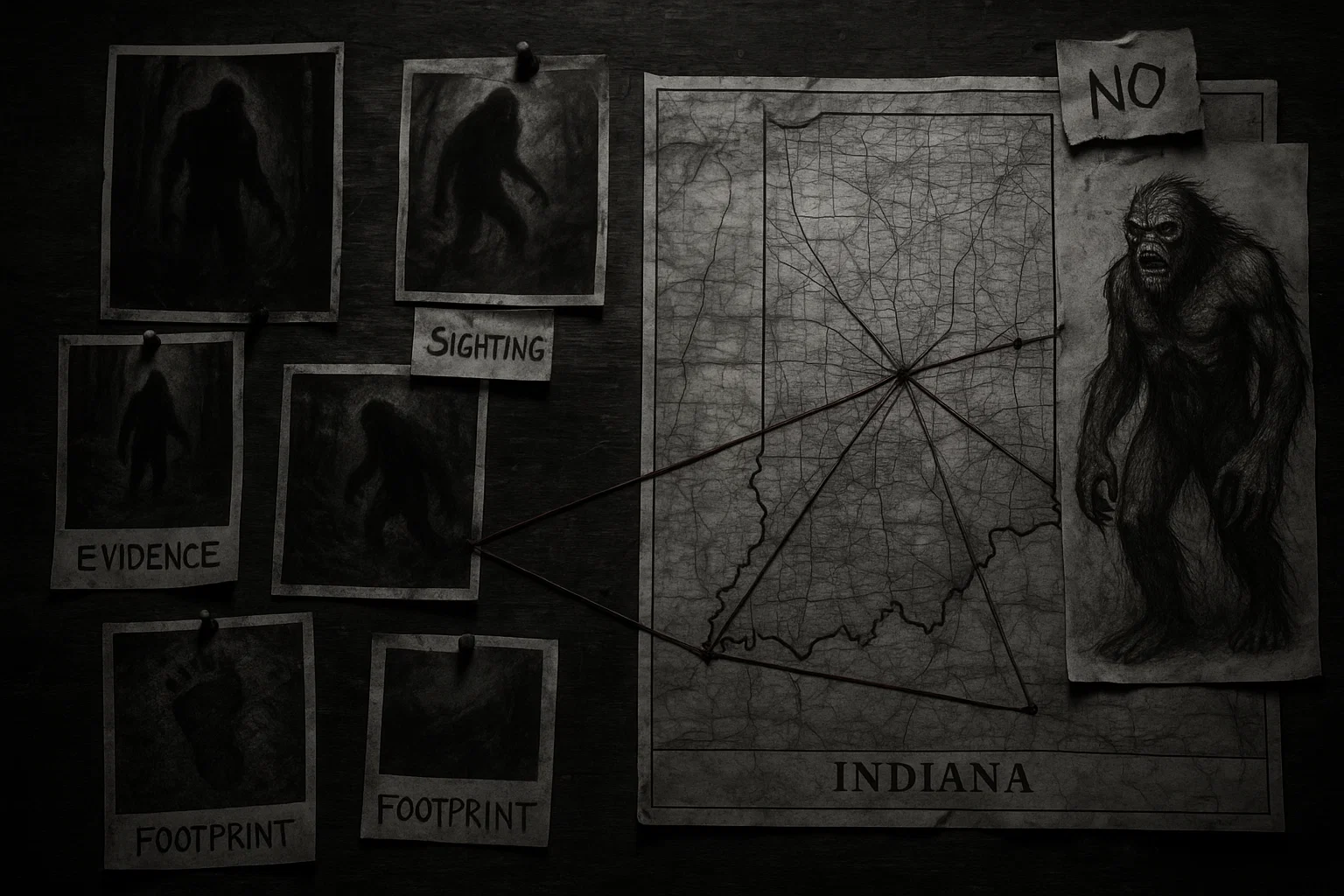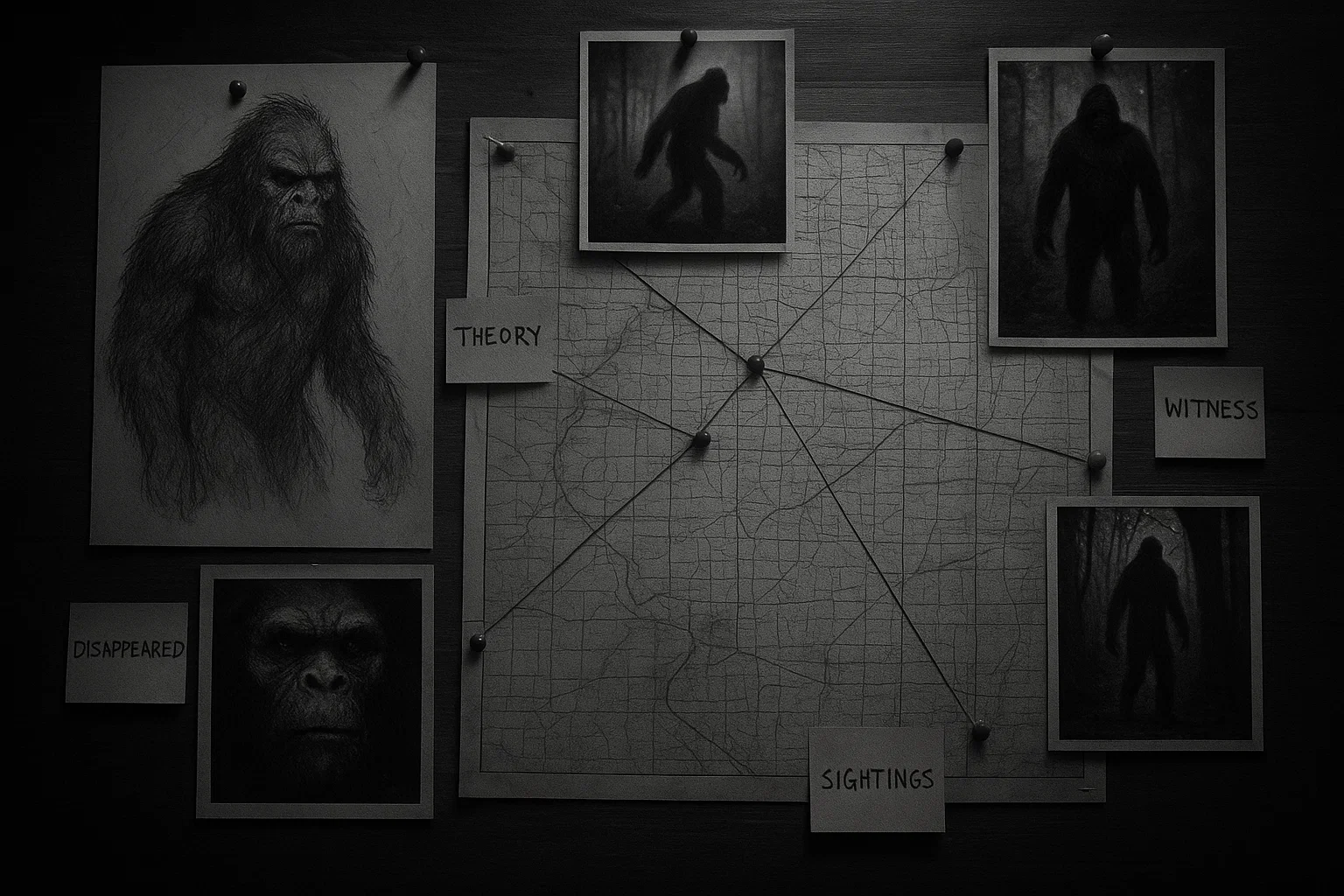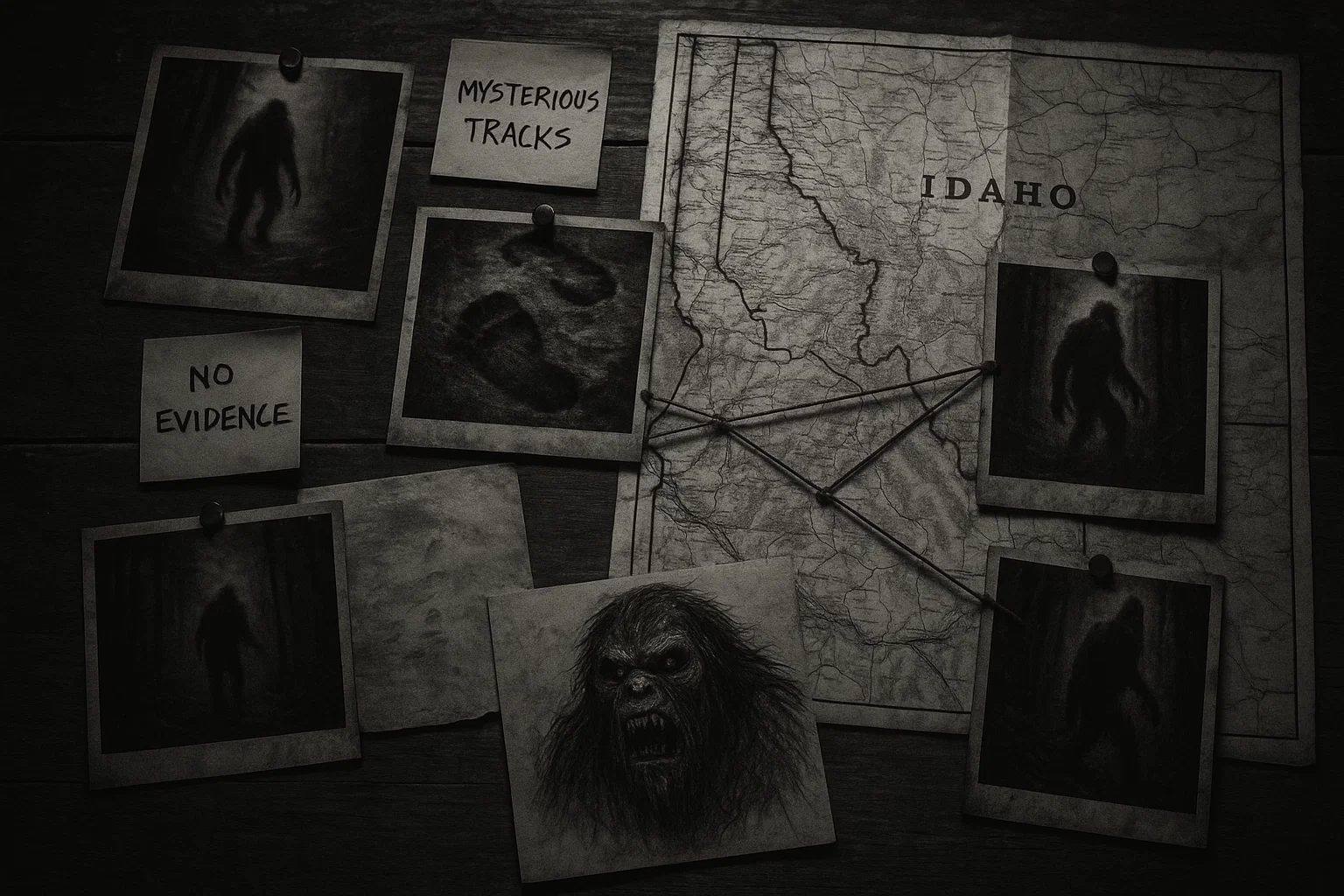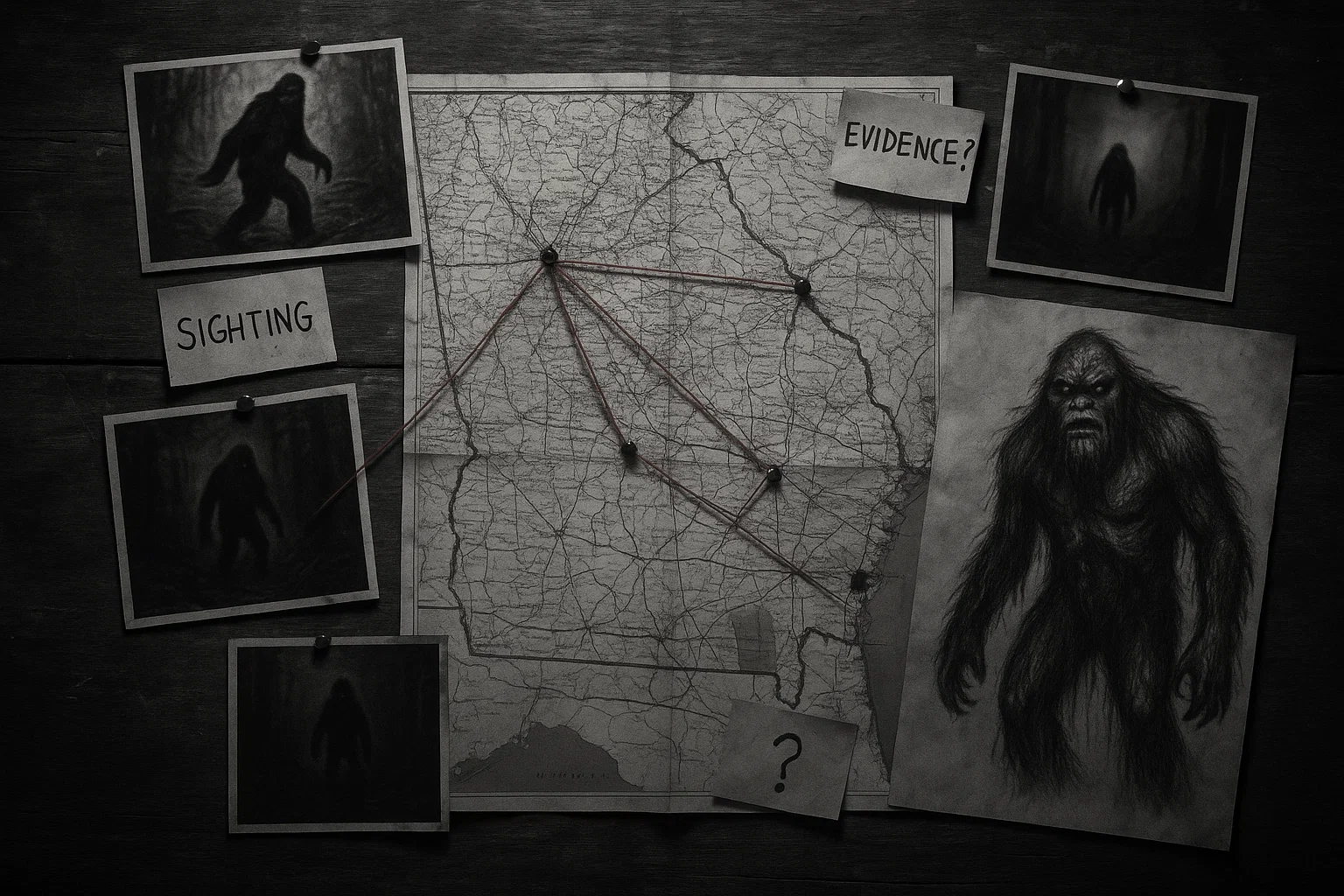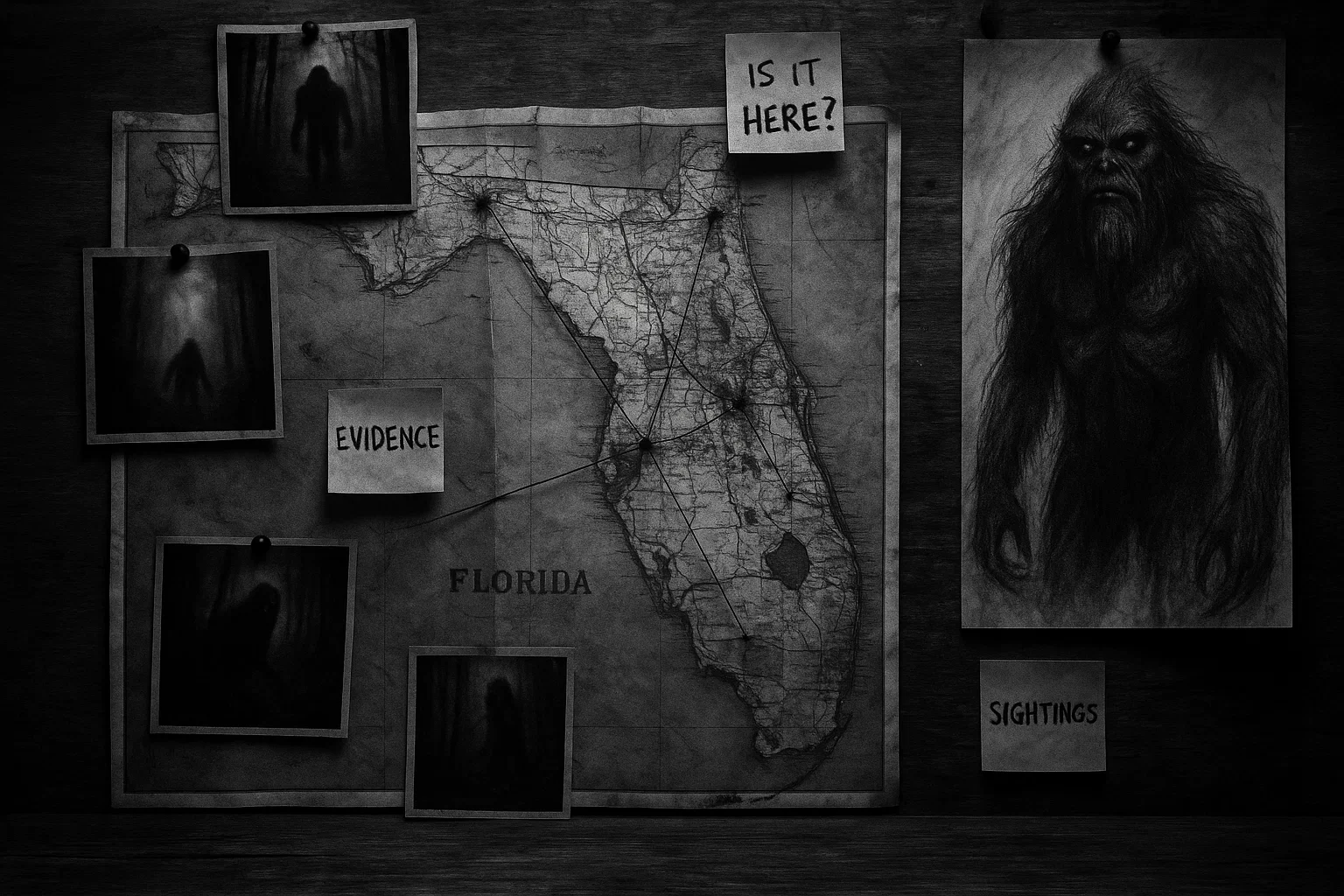In the wake of the catastrophic 2011 Tōhoku earthquake and tsunami, a chilling phenomenon emerged in Ishinomaki, Japan: ghost taxi passengers.
Taxi drivers reported picking up spectral figures who entered cabs, requested rides to devastated areas, and vanished before arriving, leaving unpaid fares and haunting questions like “Have I died?”
These eerie encounters, uncovered by a young sociology student in 2016, blend Japan’s deep-rooted spiritual beliefs with the profound grief of a disaster that claimed thousands.
This article explores the phantom passengers, their ties to the Tōhoku disaster, detailed eyewitness accounts, possible explanations, and comparisons with similar hauntings, offering a deep dive into a supernatural mystery that lingers in Miyagi Prefecture.
Table of Contents
What Are Ghost Taxi Passengers?
The ghost taxi passengers are apparitions reported by taxi drivers in Ishinomaki, a coastal city in Miyagi Prefecture, after the March 11, 2011, Tōhoku earthquake and tsunami.
These spectral figures appear as ordinary passengers, often young, who hail cabs and request destinations tied to the disaster, such as the Minamihama district or Hiyoriyama mountain, only to vanish mid-journey or upon arrival.
Drivers, who started their meters believing they had real passengers, were left with unpaid fares and eerie experiences.
First documented by Yuka Kudo, a sociology student, these accounts suggest restless spirits or psychological echoes of the tsunami’s trauma, captivating those intrigued by paranormal phenomena and Japan’s cultural beliefs in yūrei (ghosts).
History
The 2011 Tōhoku earthquake and tsunami struck with devastating force, leaving a trail of tragedy that fuels speculation about the ghost taxi passengers.
On March 11, 2011, at 2:46 pm, a magnitude 9.0 earthquake—Japan’s most powerful and the world’s fourth strongest—hit off the Oshika Peninsula. Lasting six minutes, it shifted Earth’s axis by 6.5 inches and moved Japan 4 meters closer to North America.
The quake triggered a tsunami with waves up to 133 feet, surging 6 miles inland, obliterating entire communities. The disaster killed 15,893 people, left 2,572 missing as of 2016, and injured over 6,000.
Ishinomaki, a fishing hub with 145,800 residents, was among the hardest hit, losing 3,097 lives, with 2,770 still unaccounted for by 2016. Over 50,000 buildings collapsed, and 29,000 residents became homeless.
The tsunami’s dark toll included horrific tragedies. At Ishinomaki Okawa Elementary School, a catastrophic decision to stay put led to the deaths of 74 of 108 students and staff, with 70% of the school’s children lost. Parents, wracked by guilt, later questioned why evacuation protocols failed.
In Minamihama, entire neighborhoods vanished, leaving barren wastelands. The Fukushima Daiichi nuclear meltdown, triggered by the tsunami, released radiation, forcing mass evacuations and leaving towns like Namie deserted.
Mass graves were used due to overwhelmed crematoriums, defying Japan’s tradition of cremation, which many believe traps souls, leading to yūrei.
Reports of suicides surged post-disaster, with 3,287 disaster-related suicides recorded by 2014 in Miyagi, Iwate, and Fukushima, as survivors grappled with loss.
Bizarre accidents, like a 2012 fire in Ishinomaki that destroyed temporary housing, killed two survivors, adding to the region’s sorrow. These tragedies—sudden deaths, unburied bodies, and unresolved grief—create a fertile ground for hauntings, as Japanese folklore links such events to restless spirits.
You May Also Like: The Gold of Tolosa: History’s Most Cursed Treasure?
Sightings & Eyewitness Reports
The ghost taxi passengers phenomenon gained attention through Yuka Kudo, a 22-year-old sociology student at Tohoku Gakuin University in Sendai.
In 2014–2015, Kudo interviewed over 100 taxi drivers in Ishinomaki for her 2016 thesis, asking about unusual experiences post-tsunami. Most drivers ignored her or grew angry, possibly due to trauma or fear of stigma, but seven shared chilling accounts of phantom fares.
These drivers, who started their meters and logged trips, believed they had real passengers, lending credibility to their stories. Their encounters, often with young passengers, followed a pattern: a normal pickup, a request for a tsunami-ravaged destination, and a sudden disappearance.
| Date | Location | Witness | Details |
|---|---|---|---|
| Several months after 2011 tsunami | Near Ishinomaki Station, Ishinomaki, Miyagi Prefecture | Unnamed taxi driver | Young woman in heavy coat asked to go to Minamihama, asked “Have I died?” then vanished. |
| 2011–2012 | Ishinomaki | Unnamed taxi driver | Man in his 20s asked to go to Hiyoriyama mountain, vanished upon arrival. |
| 2011–2012 | Ishinomaki | Unnamed taxi driver | Passenger asked to go to destroyed address, vanished after driver confirmed it didn’t exist. |
| 2011–2012 | Ishinomaki | Unnamed taxi driver | Silent man directed driver to another part of city, vanished upon arrival. |
| 2011–2013 | Ishinomaki | Unnamed taxi driver | Elderly man asked to go to his destroyed home, vanished when told it was gone. |
| 2011–2012 | Near Ishinomaki Station | Unnamed taxi driver | Young woman asked to go to Minamihama, vanished during trip. |
| Not specified, post-2011 | Another city (possibly not Ishinomaki) | Unnamed taxi driver | Drove sad-looking man to swept-away address, passenger vanished during drive, driver opened door for “invisible passenger.” |
| Not specified, post-2011 | Refugee community in Onagawa | Multiple residents | Old neighbor’s ghost appeared in living rooms, sat for tea, left dampness on cushions. |
| Not specified, post-2011 | Unspecified town | Fire station crew | Received calls to assist at destroyed houses, calls ceased after praying at each address. |
| Not specified, post-2011 | Unspecified | Woman | Found white flower in boot after bathhouse, same flower on father’s coffin. |
| Immediately after tsunami, March 2011 | Ishinomaki | Unnamed resident | Saw mother’s ghost right after tsunami swept away her house. |
| Not specified, post-2011 | Ishinomaki | Ami | Claimed spirits took over her body, required exorcisms. |
| Less than a fortnight after tsunami, March 2011 | Kurihara | Reverend Taio Kaneta | Performed exorcism on woman possessed by spirit of her drowned husband. |
Note: Seven drivers reported encounters, but only six provide detailed accounts. No new sightings have been documented as of June 2025.
Taxi Drivers’ Reports
Yuka Kudo, a 22-year-old sociology student at Tohoku Gakuin University, interviewed over 100 taxi drivers in Ishinomaki for her 2016 thesis, uncovering seven accounts of ghost passengers.
These drivers, who started their meters and logged trips, believed they had real passengers, only to find them vanish, leaving unpaid fares.
Yuka Kudo’s thesis revealed a pattern: young passengers, tsunami-ravaged destinations, and sudden disappearances. She noted drivers felt no fear but reverence, with one saying, “It is not strange to see a ghost here.” Another, who lost family, welcomed future spectral passengers.
Kudo theorized that young spirits, feeling “strong chagrin” at their sudden deaths, used taxis as a private space to express unresolved emotions.
Other supernatural reports in Ishinomaki included ghostly figures queuing outside destroyed shops, wandering empty districts, or appearing in puddles, reinforcing a region-wide ghost epidemic.
Buddhist priest Taio Kaneta and exorcist Kansho Aizawa reported increased spirit possessions, with some victims appearing headless or limbless, reflecting the tsunami’s violence.
The following accounts are the most detailed from her research:
You May Also Like: Japanese Horror: The Terrifying Ghost of Aka Manto
The Woman in the Heavy Coat
Date: Several months after March 2011
Location: Near Ishinomaki Station, Ishinomaki, Miyagi Prefecture
Witness: Unnamed taxi driver, male, approximately in his 50s
“She asked to be taken to the Minamihama district, which had been completely destroyed. When he told her it was almost empty, she asked: ‘Have I died?’ He turned around and she was gone.”
The driver picked up a young woman, estimated to be in her 20s or 30s, wearing a heavy winter coat despite the warm summer weather. She requested a ride to the Minamihama district, a residential area reduced to rubble by the tsunami.
When the driver informed her that Minamihama was nearly empty due to the destruction, she asked in a trembling voice, “Have I died?” Startled, he turned to look at her, only to find the backseat empty. The meter was still running, and he had to cover the unpaid fare himself.
The driver’s log recorded the trip, and he later shared that the experience left him shaken but sympathetic, as he had lost family in the tsunami.
The Man to Hiyoriyama Mountain
Date: 2011–2012, exact date unspecified
Location: Central Ishinomaki
Witness: Unnamed taxi driver, male, approximately in his 40s
“One driver told Kudo he picked up a man who wanted to go to Hiyoriyama, a mountain near Ishinomaki. When they arrived, the man had disappeared.”
The driver picked up a young man in his 20s who appeared confused. When asked for his destination, the man pointed forward silently.
After repeated inquiries, he said, “Hiyoriyama,” referring to Hiyoriyama mountain, a park offering a view over Ishinomaki’s tsunami-ravaged landscape. The driver drove to the mountain’s plateau, a journey of several minutes.
Upon arrival, he turned to collect the fare, but the passenger was gone. The meter showed an unpaid trip, which the driver paid himself.
He later noted that Hiyoriyama was a significant location, as it provided a vantage point over the destroyed city, possibly meaningful to a spirit seeking to revisit a place tied to their life.
The Passenger to the Flattened Address
Date: 2011–2012, exact date unspecified
Location: Ishinomaki
Witness: Unnamed taxi driver
“Another driver said he took a fare to an address that no longer existed. When he arrived, the passenger was gone.”
The driver accepted a passenger who requested a ride to a specific residential address in Ishinomaki. Unfamiliar with the exact location, the driver confirmed the address, only to realize it was in an area completely destroyed by the tsunami.
Upon reaching the site—now a barren plot—he turned to speak to the passenger, who had vanished. The driver logged the trip and covered the unpaid fare, later reflecting on the eerie nature of the encounter.
The lack of a physical address suggests the passenger was seeking a home lost to the disaster.
The Silent Man Across the City
Date: 2011–2012, exact date unspecified
Location: Ishinomaki
Witness: Unnamed taxi driver
“One driver said he picked up a man who didn’t speak, just pointed to where he wanted to go. When they arrived, the man had disappeared.”
The driver picked up a man in his 20s who remained silent, communicating only by pointing to direct the route across Ishinomaki. The journey took the driver to another part of the city, likely a less-affected area.
Upon reaching the destination, the driver turned to find the backseat empty, with the meter still running. He paid the fare himself and recorded the trip in his log.
The driver, who had lost relatives in the tsunami, later expressed a sense of connection to the passenger, believing it might have been a spirit seeking to revisit a familiar place.
The Elderly Man to His Former Home
Date: 2011–2013, exact date unspecified
Location: Ishinomaki
Witness: Unnamed taxi driver
“Another driver told of an elderly man who asked to be taken to his home, which had been destroyed. When informed it was gone, the man vanished.”
An elderly man entered the taxi and asked to be taken to his home, providing an address in Ishinomaki. The driver, aware of the area’s destruction, informed the man that his home no longer existed due to the tsunami.
When he turned to check on the passenger, the man had vanished, leaving an unpaid fare. The driver logged the trip and paid the fare, later sharing that the experience felt like an encounter with a spirit seeking closure.
You May Also Like: Vassago: The Demon Who Pretends to Be an Angel
The Young Woman to Minamihama (Variant)
Date: 2011–2012, exact date unspecified
Location: Near Ishinomaki Station
Witness: Unnamed taxi driver
“Yet another driver reported picking up a young woman who asked to be taken to Minamihama, but she disappeared during the journey.”
The driver picked up a young woman with wet hair, despite clear weather, who requested a ride to the Minamihama district. During the drive, she vanished from the backseat, leaving the meter running. The driver, shaken, paid the fare and logged the trip. He later avoided routes near Minamihama, fearing further encounters. The wet hair suggests a connection to drowning victims, a common detail in tsunami-related ghost stories.
Local Residents’ Reports
Beyond taxi drivers, residents across Tohoku reported a range of supernatural phenomena, from ghostly apparitions to possessions, reflecting the region’s collective grief.
These accounts, documented in sources like Richard Lloyd Parry’s Ghosts of the Tsunami and media reports, highlight the widespread belief in spirits post-disaster.
The Dead Woman Visiting Friends
Date: Not specified, post-2011
Location: Refugee community in Onagawa, Miyagi Prefecture
Witnesses: Multiple residents in temporary housing
Residents in a temporary housing community in Onagawa, a coastal town devastated by the tsunami, reported seeing the ghost of a deceased woman, described as an old neighbor.
She would appear in their living rooms, sit down as if to share a cup of tea, and then vanish, leaving dampness on the cushion where she sat. This physical trace—dampness—suggested a connection to the tsunami’s watery destruction, as many victims drowned.
The residents, living in cramped temporary shelters, found these visits startling but not entirely unwelcome, as they evoked memories of lost community members.
The Fire Station Calls
Date: Not specified, post-2011
Location: Unspecified town in Tohoku
Witnesses: Fire station crew
A fire station in a tsunami-affected town received repeated calls requesting assistance at addresses that had been destroyed by the tsunami. The crew responded by visiting each location, finding only rubble or empty lots.
At each site, they prayed for those who had lived and died there, offering respects to the deceased. After these prayers, the mysterious calls ceased, suggesting the spirits were seeking acknowledgment or closure.
You May Also Like: Is Busby’s Stoop Chair Curse Really Deadly?
Reverend Kaneta’s Exorcisms
Date: Starting less than a fortnight after the tsunami, March 2011
Location: Kurihara, Miyagi Prefecture, and other areas
Witness: Reverend Taio Kaneta, Zen priest
Reverend Kaneta, a Zen priest based in Kurihara, 30 miles inland from the coast, began performing exorcisms shortly after the tsunami. His first case, less than two weeks after March 11, 2011, involved a woman believed to be possessed by the spirit of her drowned husband.
Families sought Kaneta’s help as reports of possessions increased, with victims exhibiting behaviors or voices not their own, often linked to tsunami victims.
Kaneta noted that these spirits seemed to express unresolved grief or anger, reflecting the sudden and violent nature of their deaths.
Ami’s Possession
Date: Not specified, post-2011
Location: Ishinomaki
Witness: Ami, a local resident
Ami, an Ishinomaki resident, reported that spirits frequently took over her body, causing her to act or speak in ways she could not control. She sought help from Reverend Taio Kaneda, a Buddhist priest, who performed exorcisms to free her from these possessions.
Ami’s experiences were part of a broader wave of possession reports in Ishinomaki, where survivors felt overwhelmed by the presence of the deceased.
The Woman and the White Flower
Date: Not specified, post-2011
Location: Unspecified town in Tohoku
Witness: Unnamed woman
After visiting a public bathhouse, a woman discovered a white flower inside one of her boots, an unusual occurrence with no clear explanation. Two weeks later, at her father’s funeral, she saw the same variety of white flower placed on his coffin by an unknown person.
This mysterious connection between the flower in her boot and her father’s funeral was interpreted as a supernatural sign, possibly from her deceased father or another spirit linked to the tsunami.
You May Also Like: The Infamous Cursed Kleenex Commercial: Fact, Fiction, and Urban Legend
Theories
The ghost taxi passengers spark debate between paranormal and rational explanations:
Paranormal Perspectives
Restless Yūrei Spirits:
- Explanation: In Shinto and Buddhist beliefs, yūrei are spirits of those who died violently or without proper burial, unable to pass to the afterlife. The tsunami’s sudden deaths—15,893 confirmed, 2,572 missing—left many bodies unrecovered, buried in mass graves. These spirits may linger, seeking closure.
- Fit: The passengers’ requests for destroyed homes or significant sites like Minamihama suggest they seek lost connections. The question “Have I died?” indicates confusion, a hallmark of yūrei. Japan’s spiritual culture supports this view.
- Weakness: No physical evidence, like photos or videos, confirms these apparitions. Skeptics argue they are psychological rather than supernatural.
Cultural Acceptance of Ghosts:
- Explanation: Japan’s Shinto religion emphasizes spirits in everyday life. Post-tsunami, Ishinomaki residents reported widespread ghostly sightings, from queues at ruined shops to figures in puddles, suggesting a cultural lens that interprets unusual events as spiritual.
- Fit: Drivers’ lack of fear and reverence for passengers align with Japan’s view of ghosts as part of life. Yuka Kudo noted drivers saw these encounters as meaningful, not terrifying.
- Weakness: Cultural bias may lead drivers to interpret ambiguous experiences as ghostly, especially in a traumatized community.
Unfinished Business:
- Explanation: Yūrei often linger to resolve unfinished tasks, like returning home or meeting loved ones. Passengers’ destinations—destroyed homes or Hiyoriyama—suggest attempts to reconnect with their past.
- Fit: The elderly man seeking his home and the woman asking for Minamihama reflect this motive. The tsunami’s destruction left many unable to fulfill final wishes, supporting this theory.
- Weakness: The theory assumes spirits have conscious intent, which lacks empirical support. Psychological explanations may better account for these patterns.
Taxis as Spiritual Mediums:
- Explanation: Yuka Kudo suggested taxis, as private spaces, allow spirits to express their grief. The intimate setting may attract yūrei to convey their “chagrin” at untimely deaths.
- Fit: The consistent pattern of young passengers and personal destinations supports this. Taxis, unlike public transport, offer a one-on-one interaction, ideal for spiritual communication.
- Weakness: This assumes spirits choose specific vehicles, which is speculative. Psychological factors, like drivers’ expectations, could explain the phenomenon.
Tsunami’s Spiritual Energy:
- Explanation: The tsunami’s massive loss of life may have created a spiritual “echo,” amplifying supernatural activity. Priests like Taio Kaneta reported increased possessions, suggesting a surge in restless spirits.
- Fit: Widespread reports of ghosts in Ishinomaki—from taxi passengers to apparitions in puddles—suggest a concentrated spiritual disturbance tied to the disaster’s scale.
- Weakness: This theory is broad and lacks specific evidence linking the tsunami’s energy to taxi encounters. It may overgeneralize paranormal activity.
Rational Perspectives
Post-Traumatic Stress Disorder (PTSD):
- Explanation: PTSD affects 1 in 5 survivors with hallucinations, including visions of the deceased. Ishinomaki’s drivers, many of whom lost family, may have experienced trauma-induced visions.
- Fit: The disaster’s scale—3,097 deaths in Ishinomaki—supports PTSD as a cause. Psychiatrist Keizo Hara noted apparitions appeared in swept-away areas, linking them to trauma.
- Weakness: Not all drivers had diagnosed PTSD, and their detailed logs suggest a shared experience, not individual hallucinations.
Grief Hallucinations:
- Explanation: Grief can cause hallucinations, where survivors “see” loved ones. A 2007 study found post-bereavement hallucinations common and often comforting, matching drivers’ lack of fear.
- Fit: Drivers who lost family, like one who welcomed future ghosts, may have projected their grief onto passengers. The young passengers align with the tsunami’s many young victims.
- Weakness: Hallucinations typically involve known individuals, not strangers. The consistency of accounts across drivers challenges this explanation.
Psychological Projection:
- Explanation: Survivors may project fears or guilt onto their environment. Keizo Hara suggested ghosts reflect “terror and worries” in devastated areas, a collective response to loss.
- Fit: Ishinomaki’s barren landscapes and mass graves could trigger projections. Drivers’ focus on destroyed destinations supports this.
- Weakness: Projections don’t explain why only certain drivers reported encounters or why logs consistently showed unpaid fares.
Urban Legend Influence:
- Explanation: The phantom hitchhiker urban legend, where drivers pick up vanishing passengers, is global. Ishinomaki’s stories may reflect this narrative, shaped by trauma and cultural expectations.
- Fit: The accounts mirror classic phantom hitchhiker tales, with young passengers and sudden vanishings. Cultural familiarity with such stories could influence perceptions.
- Weakness: Drivers’ logs and financial losses suggest genuine experiences, not fabricated tales. The specificity of tsunami-related destinations sets these apart from generic legends.
Fatigue and Stress:
- Explanation: Post-tsunami, drivers worked long hours in a devastated city, leading to fatigue-induced misperceptions. Stress may have caused them to misinterpret passengers or imagine vanishings.
- Fit: Ishinomaki’s rebuilding left drivers with few customers, increasing stress. Fatigue could explain brief, unclear encounters.
- Weakness: Detailed accounts, like the woman’s question or the man’s silent directions, suggest more than fleeting misperceptions. Logs and consistent patterns challenge this theory.
You May Also Like: Curse of the Colonel Sanders: Coincidence or Real Haunting?
Ghost Taxi Passengers vs Other Hauntings
The ghost taxi passengers are a modern take on the phantom hitchhiker legend, where drivers encounter vanishing passengers tied to tragic events.
Unlike many global tales, Ishinomaki’s stories are rooted in a specific disaster—the 2011 tsunami—and reflect Japan’s spiritual culture:
| Location | Ghost Description | Interaction | Notable Features |
|---|---|---|---|
| Seven Sisters, UK | White Lady | Requests ride, gives destination | Linked to cliffside deaths, historical |
| Chicago, USA | Resurrection Mary, young woman in dress | Picked up, may dance or hum | Tied to a 1930s car accident |
| Highway 101, USA | Man in old-fashioned clothing | Discusses past events | Associated with accident-prone roads |
| A417, UK | Man giving directions | Provides warnings | May warn of road dangers |
| Route 20, USA | Woman in long coat | Silent or talkative | Set in New England, historical context |
| Canada | Soldier in WWII uniform | Picked up by soldiers | Linked to fallen soldiers |
| County Kerry, Ireland | Monk | May bless or curse | Tied to monastic history |
| Black Forest, Germany | Headless figure | Delivers message | Part of regional folklore |
| Mexico | Weeping woman in white | Often crying | Similar to La Llorona legend |
| Japan (general) | Samurai warrior | Speaks of past | Reflects samurai culture |
| Blue Bell Hill, UK | Young woman | Asks for ride home | Linked to 1965 car crash |
| Tsushima, Japan | Young woman in kimono | Requests coastal village | Tied to historical drownings |
| South Carolina, USA | Gray Lady | Seeks lost home | Linked to Civil War era |
The ghost taxi passengers are unique for their recent origin, specific disaster context, and consistent pattern of tsunami-related destinations. Unlike older legends, they involve documented logs and financial losses, grounding them in Ishinomaki’s reality.
Is the Story Real?
The ghost taxi passengers captivate due to their vivid accounts and cultural resonance. Seven drivers, backed by trip logs and unpaid fares, reported consistent experiences: young passengers, tsunami-ravaged destinations, and sudden vanishings.
Yuka Kudo’s 2016 thesis lends credibility, as does the drivers’ lack of fear and reverence for their spectral fares.
In Japan’s Shinto and Buddhist traditions, yūrei are plausible, especially after the 2011 tsunami’s mass deaths and improper burials. The passengers’ questions, like “Have I died?” and their focus on lost homes, align with restless spirits seeking closure.
Yet, no physical evidence—photos, videos, or artifacts—confirms these apparitions. Rational explanations, like PTSD or grief hallucinations, are compelling, as 1 in 5 trauma survivors report seeing the deceased.
Keizo Hara linked sightings to devastated areas, suggesting psychological projection. The phantom hitchhiker legend’s global prevalence raises questions about cultural influence.
As of June 2025, no new sightings have emerged, but the stories remain a poignant reminder of Ishinomaki’s loss, reflecting either supernatural echoes or the enduring pain of survivors.


